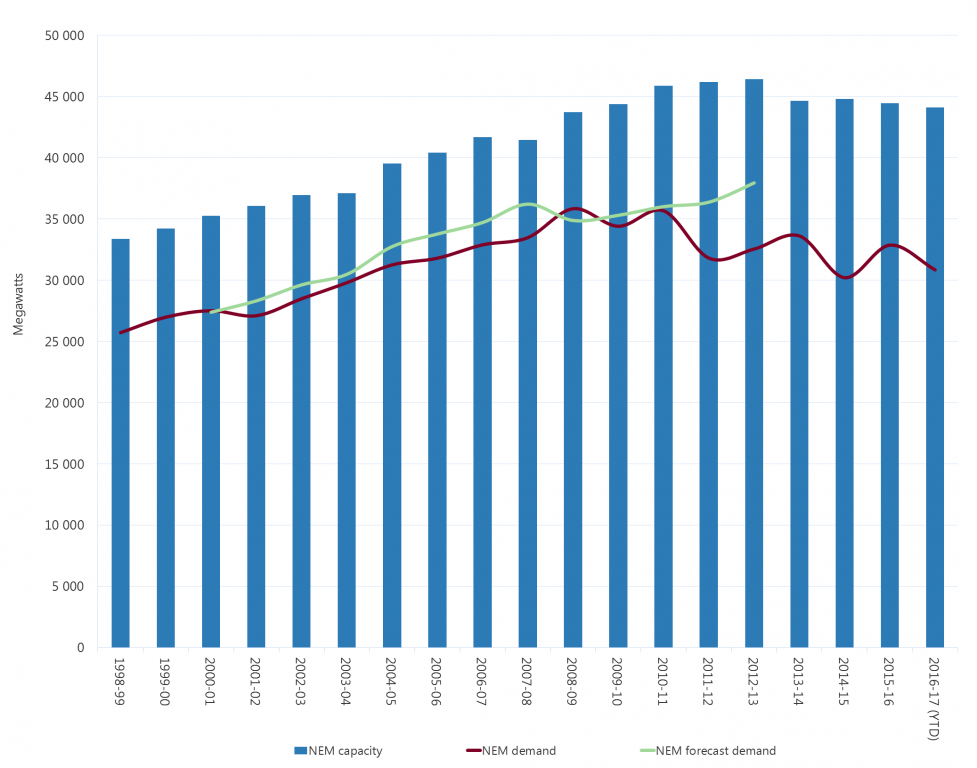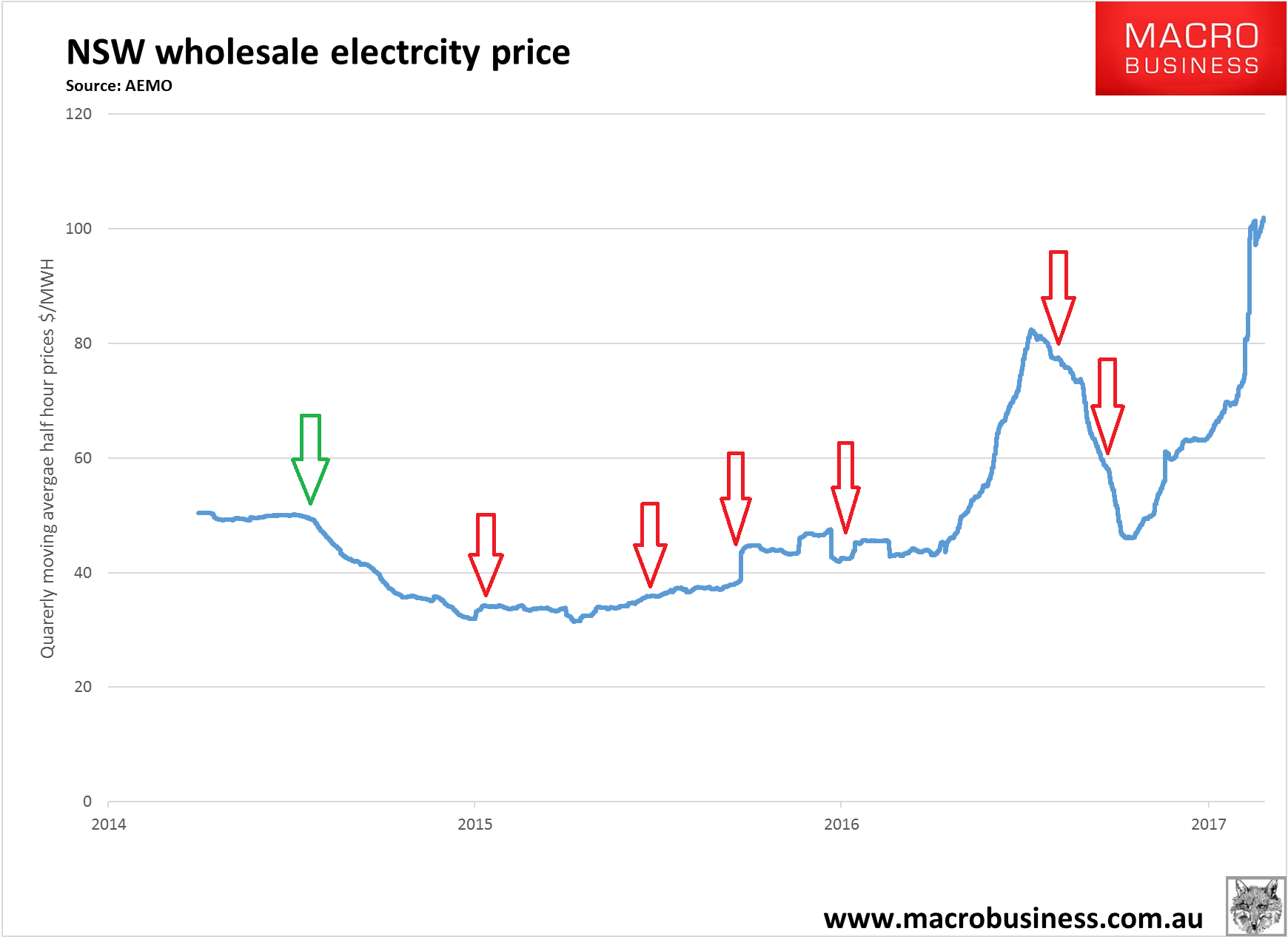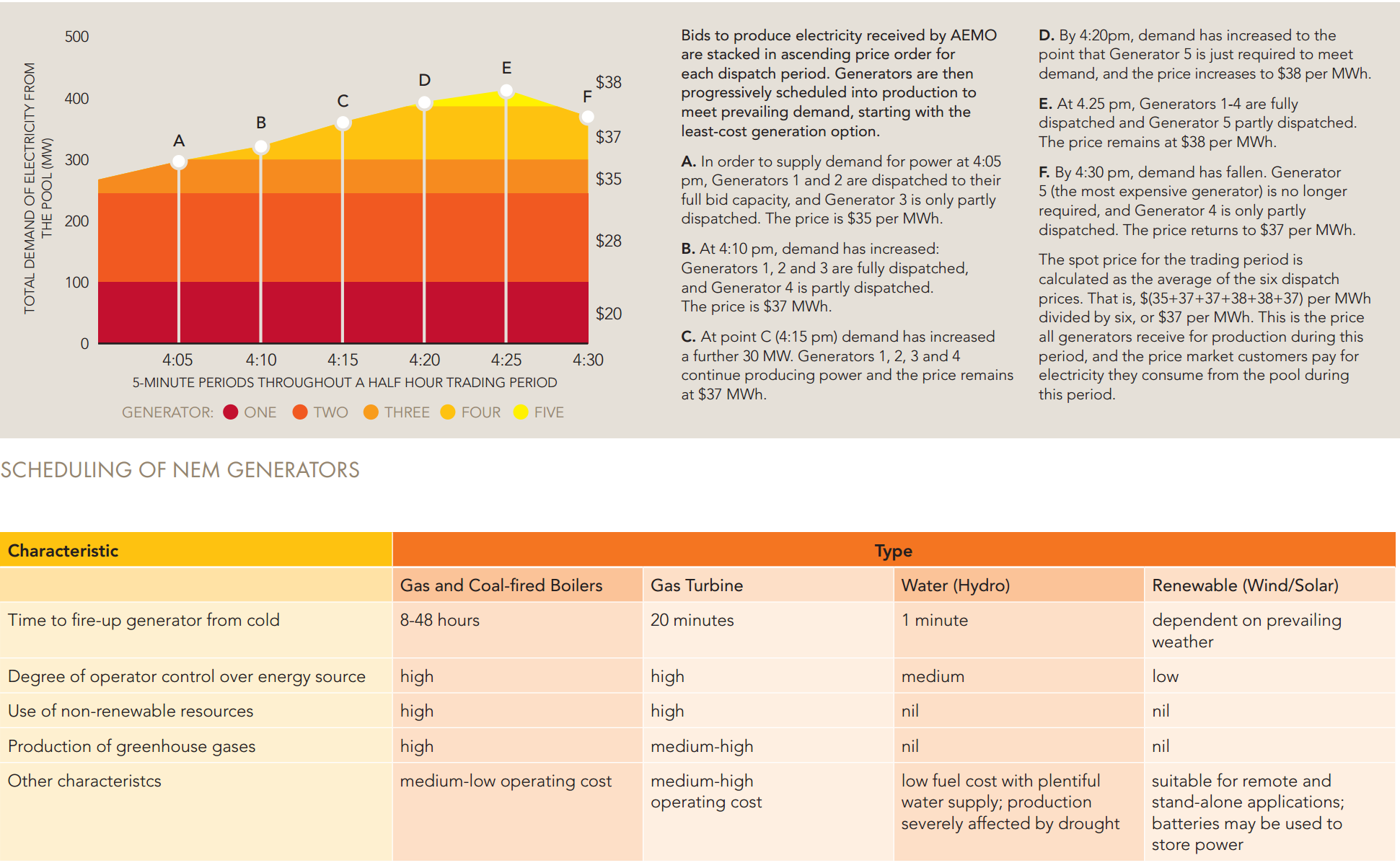Wholesale electricity prices jumped in anticipation of yesterday’s closure of the Hazelwood power station in Victoria, with analysts forecasting 10 to 20 per cent increases in household power bills next year.
Wholesale electricity prices have more than doubled to $120 per megawatt hour in NSW since September and to $80MWh in Victoria since January as generators take advantage of declining supply.
Futures contracts, which anticipate the price a year ahead, are up 50 per cent since January and 200 per cent from a year ago in the four mainland states that make up the National Electricity Market. Prices are at $125MWh in Victoria and $118MWh in NSW.
ITK Consulting principal David Leitch estimated the rise in prices since April last year would cost the National Electricity Market as much as $11 billion.
Mr Leitch said bill increases for households and large commercial users of 20 per cent were “entirely likely”.
…“There is actually enough new supply being built to replace Hazelwood, but because of the renewable energy target review and the anti-wind stance of federal government it’s being delayed by about two years over when it would otherwise have occurred,’’ he said.
Bingo. I’ll have to redo my numbers. That’s double the damage than I’ve calculated. More to the point, electricity prices are NOT rising owing to the Hazelwood closure. They are rising owing to the gas shortage.
The Hazelwood closure is only an issue if the idle gas capacity across the east coast is not brought back online. There is oodles of spare generator capacity in the National Electricity Market (NEM):

You’ll note that the 1600MW Hazelwood closure would hardly dent the capacity glut. Yes glut. The problem is much of the spare capacity in the system is gas-fired power which is now uneconomic thanks to the great cartel gouge in the gas market.
The AEMO has taken the extraordinary step of launching community outreach to explain what’s really going on, against its own boss, the government, from Domainfax:
As the giant Hazelwood coal plant turns off the last of its units, the national electricity grid manager has sought to reassure the public it is taking steps to ensure the lights stay on when demand soars next summer.
In an interview with Fairfax Media, the Australian Energy Market Operator [AEMO] said Hazelwood’s closure would be offset by the availability of three mothballed gas-fired stations – one each in South Australia, Tasmania and Queensland – and large industrial businesses agreeing to time-shift their electricity use in the event of an emergency.
“The risk is no greater than it was this summer when you look at the generation that’s available to us,” AEMO chief operating officer Mike Cleary said.
Mr Cleary said removing Hazelwood’s 1600 megawatt capacity could have left a shortfall of between 200 and 500 megawatts in the event of a worst-case scenario – extreme temperatures, mass use of airconditioners and no wind to drive turbines.
But he said if necessary this would be replaced by about 830 megawatts of gas-fired power that has not been in use.
Here’s the chart (the green arrow is the carbon price abolition, red is Curtis Island LNG startups):

It is gas that sets the marginal cost in the NEM, not coal, owing to where it sits in the wholesale electricity market bid stack. See Australian Energy Market Operator description below:
High cost gas sets the marginal price and when the price of gas is high so is the price electricity. This is made worse by the fact that the economics of peaking gas plants (turbines) are far more sensitive to input price changes than are coal-fired power.
We don’t need Hazelwood. We need cheaper gas and stable carbon pricing policy. Then all of the problems will go away at once and we’ll have time to decarbonise the network with longer term battery and other storage options to stabilise renewables. This was always the national plan, such as it was, that gas would be the transitional fuel as we move steadily from coal power to renewables. The only thing that has gone wrong with it is an east coast gas cartel has formed around Curtis Island and is gouging the shit out of everyone.


